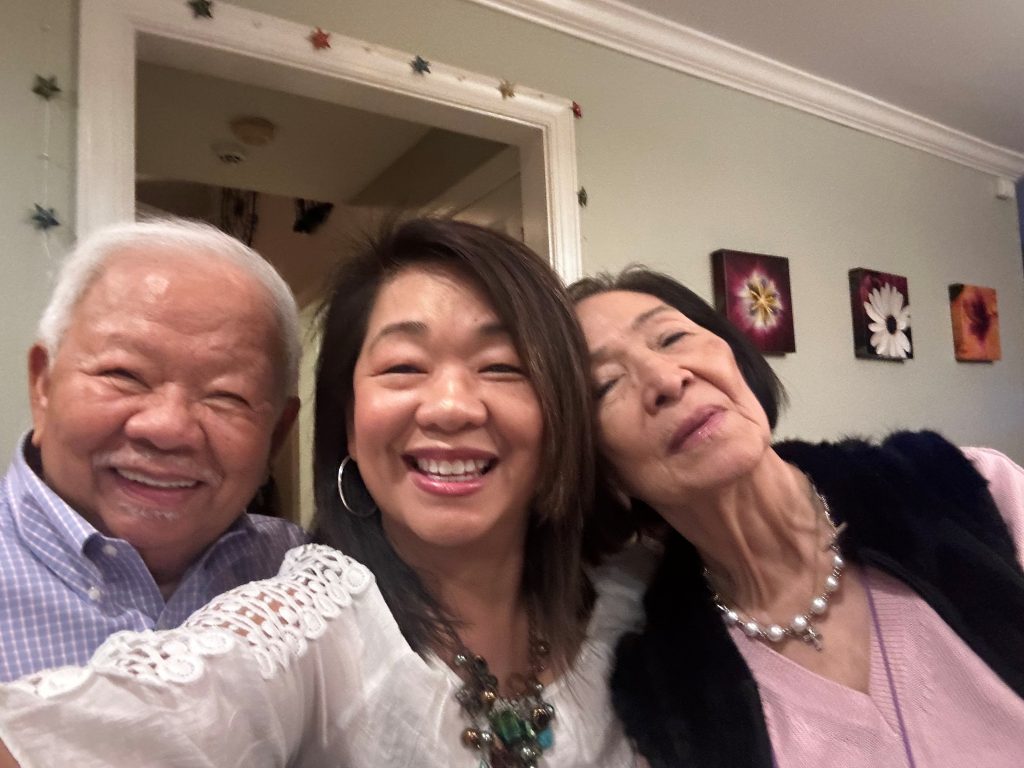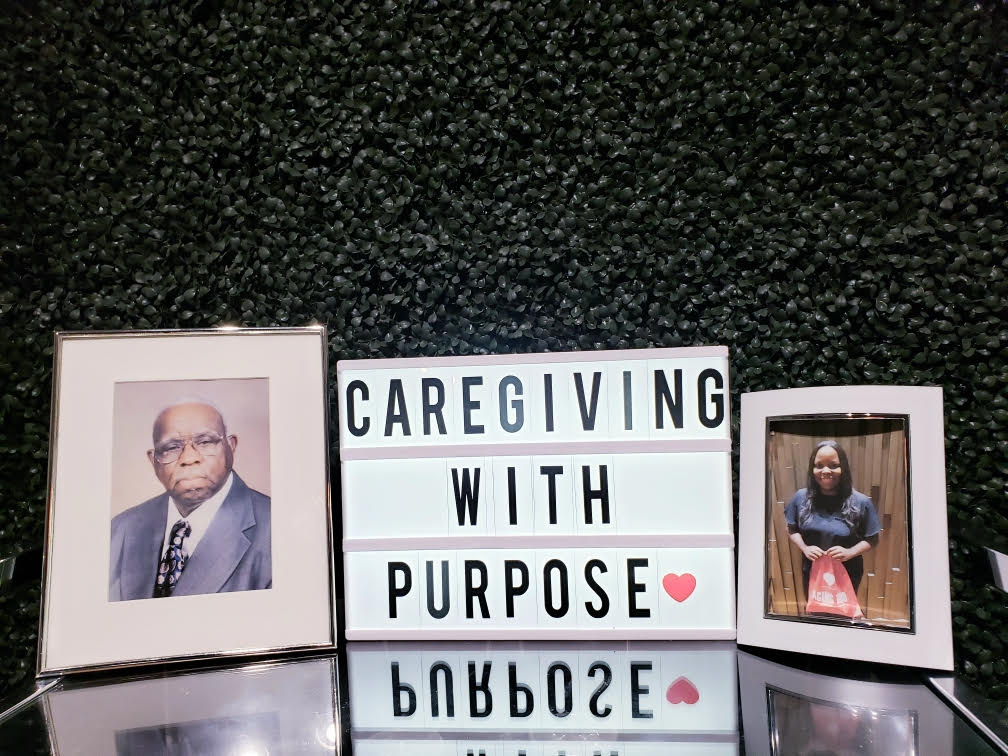Abstract:
Area Agencies on Aging (AAAs) respond to elders’ needs in most communities in the United States, playing a critical role in assessing those needs and developing plans to address them. AAAs also evolve continuously, and the Older Americans Act (OAA) has adapted to allow AAAs to seek out revenue streams, including partnerships with healthcare entities to help their mission. USAging is the home of the Aging and Disability Business Institute, which since 2016 has been helping to build and strengthen partnerships between aging and disability community-based organizations and the healthcare system to ensure better quality care for elders.
Key Words:
Area Agencies on Aging, USAging, Aging and Disability Business Institute, community-based organizations, healthcare entities
Established by the 1973 reauthorization of the Older Americans Act (OAA), Area Agencies on Aging (AAAs) are charged with responding to the needs of Americans ages 60 and older in nearly every community in the country. AAAs are a part of the national Aging Network, which includes the federal Administration on Aging (AoA) (part of the U.S. Administration for Community Living [ACL]), State Units on Aging (SUAs), and thousands of community-based providers with which AAAs partner and contract (USAging, 2020).
AAAs play a critical role in assessing community needs and developing area plans to address these needs, and they develop, coordinate, monitor, and, in some cases, deliver services and supports that help enable older adults, caregivers, and, in many cases, people with disabilities, to live with independence and dignity in their homes and communities. The OAA mandates that AAAs provide a set of core services, including nutrition, health and wellness, caregiver supports, elder rights, and supportive services such as transportation and legal services.
To respond to the needs of a growing number of older adults and new programmatic funding opportunities, AAAs have evolved and adapted over time, now offering an average of 27 additional services to help older adults continue living in their communities (National Academies of Sciences, Engineering, and Medicine, 2019). Some of the non-core services offered by AAAs include care management, options counseling and assessment, and care-planning services.
AAAs offer these additional services by leveraging non-OAA funding sources, including state general revenue and other local funding, Medicaid home- and community-based services (HCBS) waivers, local levies and other funding, Veterans Administration funding, and private pay. Over time, this has meant that OAA dollars represent a decreased share of AAA budgets. OAA funding in 2019 represented 44% of the average AAA budget, while Medicaid waiver dollars represented 28% of that average budget and state general revenue 24% (National Academies of Sciences, Engineering, and Medicine, 2019).
|
Funding Sources |
Percent Reporting Any Funding from This Source (n=430) |
Average Budget Proportion* *calculated based upon AAAs that report any funding from this source |
|
Older Americans Act |
100% |
44% |
|
State general revenue |
73% |
24% |
|
Local government |
57% |
17% |
|
Medicaid/Medicaid waiver |
43% |
28% |
|
Grant funds/philanthropy |
39% |
6% |
|
Other federal funding |
35% |
9% |
|
Other state funding |
31% |
15% |
|
Cost share revenue |
20% |
4% |
|
Other |
20% |
12% |
|
Transportation funding (federal, state, or local) |
20% |
9% |
|
Healthcare payer (hospital, managed care organization, Medicaid MCO, etc.) |
18% |
7% |
|
Department of Veterans Affairs |
16% |
5% |
|
Private pay revenue |
16% |
4% |
|
Medicare |
3% |
5% |
Source: USAging. (2020). AAA National Survey Report: Meeting the needs of today’s older adults.
In recent years, the OAA has been adapted to allow AAAs to seek out new revenue streams to help their mission. The latest OAA reauthorization, the Supporting Older Americans Act of 2020, included language clarifying that AAAs are not limited by their OAA roles when seeking new partnerships and contracts with a broad array of payers—as long as such activities do not draw upon OAA funding streams. This means that AAAs are free to engage in private pay, integrated care, and other arrangements to expand services. Led by USAging (formerly the National Association of Area Agencies on Aging) and supported by other advocates, this clarifying language was adopted by Congress to ensure that the Aging Network has maximum flexibility to develop and provide as many HCBS as possible to address the needs of older adults.
The Why
Over the past decade there has been a drive toward the integration of healthcare and HCBS to better meet the holistic health-related needs of older adults, people with disabilities and their family caregivers. In a 2019 report, Integrating Social Care into the Delivery of Health Care: Moving Upstream to Improve the Nation’s Health, the National Academies of Science, Engineering, and Medicine state that “integrating social care into health care delivery holds the potential to achieve better health outcomes for the nation and address major challenges facing the U.S. health care system” (National Academies of Sciences, Engineering, and Medicine, 2019).
This integration has been catalyzed by delivery system reforms and new payment models on the part of the federal government, states, and healthcare providers. These reforms have focused on value, safety, and systemic quality improvement rather than on the volume of services provided. The goal is to achieve the Triple Aim (Institute for Healthcare Improvement [IHI], n.d.) of a better care experience (both quality and satisfaction), improved population health, and lower costs or smarter spending.
Health happens in the home, and the U.S. healthcare system increasingly is recognizing and responding to that idea by paying attention to what are called the social determinants of health (SDOH), defined by the Centers for Disease Control and Prevention (CDC) as “conditions in the places where people live, learn, work, and play” (CDC, n.d.).
While Medicare and Medicaid expenditures have risen exponentially since the inception of those programs, OAA funding has historically lagged behind.
Eighty percent of health outcomes are driven by the physical environment in which a person lives, socioeconomic factors such as nutrition, income, and social supports, as well as other behavioral factors, including diet and exercise, substance use, and more. Addressing these factors and better meeting the needs of the growing population of older adults and their families requires community-driven solutions and cross-sector partnerships between the healthcare system and the Aging Network.
AAAs and other OAA service providers can help to achieve Triple Aim goals by adding value in managing chronic conditions; activating patients and families; reducing hospital readmissions; avoiding long-term institutionalization; and helping people continue living in the community where they overwhelmingly prefer to be. The trend toward integration presents unique opportunities for AAAs and other OAA service providers to contract with healthcare entities seeking to address the health-related social needs of the people whom they serve.
For AAAs and other OAA service providers, these contracting opportunities offer the chance to leverage their expertise and experience, and further the tenets and mission of the OAA by addressing the needs of older people and family caregivers in their communities, coordinating care with healthcare partners, and generating sustainable revenue sources. ACL has supported this healthcare contracting work through grant-making, technical assistance, learning collaboratives, and other educational opportunities as part of its Business Acumen Initiative.
Also contributing to this drive to modernize and transform the Aging Network is the need for sustainable revenue sources for AAAs and OAA service providers that enable them to address the needs of the nation’s growing number of older adults. While Medicare and Medicaid expenditures have risen exponentially since the inception of those programs, OAA funding has historically lagged behind. And while COVID relief packages in 2020 and the American Rescue Plan Act in 2021 have infused significant new dollars into OAA programs and services, this new funding is not a guaranteed permanent fix for a social services system that has been chronically underfunded.
The Policy Foundation for New Contracting Opportunities for the Aging Network
On the federal side, the Patient Protection and Affordable Care Act of 2010 (ACA) paved the way toward integration and value-based care and opened doors for the Aging Network in terms of new work with healthcare providers and payers. The ACA provided $50 million over five years for further development of ACL’s Aging and Disability Resource Center (ADRC) Program. Through a joint effort of the Center for Medicare and Medicaid Innovation (the Innovation Center) and the Medicare-Medicaid Coordination Office within the Centers for Medicare & Medicaid Services (CMS), the Financial Alignment Initiative Demonstration (which sought to align service delivery and financing of the Medicare and Medicaid programs in states to better serve dual eligibles) offered more funding to ADRCs and/or State Health Insurance Assistance Programs (SHIPs), most of which are based in AAAs, to offer options counseling to Medicare-Medicaid enrollees.
But the major opportunity for healthcare partnerships for AAAs and other AoA grantees under the ACA came in Section 3026, which mandated the creation of CMS’s Community-Based Care Transition Program (CCTP). That program funded and tested models for improving care transitions from the hospital to the home for high-risk Medicare beneficiaries and reducing avoidable readmission rates for this population. While eligible applicants for CCTP funding included community-based organizations (CBOs) in partnership with hospitals with high readmission rates, the statute required preference be given to AAAs and other AoA grantees that provided care transition interventions. More than half of the CBOs awarded CCTP were AAAs (Ruiz et al., 2017).
The 2018 Bipartisan Budget Act and CHRONIC Care Act offered new tools and strategies to address the needs of people with Medicare who have complex care needs, and expanded opportunities for partnership and contracting between AAAs, CBOs, and Medicare Advantage (MA) plans. The flexibility afforded to MA plans to offer HCBS and address SDOH as part of the Special Supplemental Benefits for the Chronically Ill (SSBCI) opens new doors to use Medicare dollars to meet the health-related social needs of beneficiaries and caregivers through services such as home-delivered meals and other nutrition programs, transportation for medical and non-medical needs, caregiver supports, adult daycare services, in-home support services and more—all of which the Aging Network has been providing for decades.
Among states, the desire to improve care coordination and have more predictable Medicaid costs in their budgets, particularly for long-term services and supports, has brought about the move toward Medicaid managed long-term services and supports (MLTSS), with more than 20 states with active and still more developing or considering such programs (Advancing States, n.d.). States also are exploring other models such as Medicaid Accountable Care Organizations and Delivery System Reform Incentive Payment programs that allow them to better coordinate services and address health-related social needs for vulnerable and underserved populations.
For example, Massachusetts’ Medicaid Accountable Care Organization program has integrated community-based social service organizations as certified Community Partners into the model of care to provide care coordination and address the health-related social needs of members. The aging network in Massachusetts has stepped up as Community Partners, breaking down silos and helping to improve health outcomes (Bratton, 2021).
How Is Contracting Going?
USAging is the home of the Aging and Disability Business Institute (Business Institute), which since 2016 has been supported by The John A. Hartford Foundation, ACL, The SCAN Foundation, and other funders. Building upon its deep knowledge of the Aging Network and how it works in communities around the country, the mission of USAging’s Business Institute is to build and strengthen partnerships between aging and disability CBOs and the healthcare system to ensure better quality care for older adults and people with disabilities. The Business Institute accomplishes its work via partnerships with national and local partners, including ASA, AgeSpan (formerly Elder Services of the Merrimack Valley and North Shore), Independent Living Research Utilization, the National Council on Aging, Partners in Care Foundation, and Scripps Gerontology Center of Excellence at Miami University.
In 2021 nearly 17% of CBOs responding to our survey had contracts with MA plans.
An important component of our work is conducting periodic Request for Information surveys of aging and disability CBOs to gauge the extent to which healthcare providers and payers are contracting with AAAs and other CBOs, and to ascertain the nature of these relationships. In partnership with Scripps Gerontology Center of Excellence at Miami University, the Business Institute has conducted four such surveys since its inception—in 2017, 2018, 2020, and 2021—which paint an illuminating picture of the growth of CBO-healthcare contracting in recent years.
Over the course of the four surveys, there has been growth in contracting between aging and disability CBOs (including AAAs) and healthcare entities. In 2017, 38.1% of the CBOs responding to the survey indicated that they had at least one contract with a healthcare entity. By 2021, this figure had grown to a statistically significant degree, with nearly 44% of responding CBOs having at least one healthcare contract (Kunkel et al., 2020). (The 2021 research brief had not been published when finalizing this article; 2021 percentages come from our unpublished data.)
With which types of healthcare entities are AAAs and CBOs contracting? Among payers, it tends to be Medicaid-focused, with about 44% of the CBOs that responded to the 2021 survey having contracts with Medicaid managed care plans in their states. More than 29% had contracts with Veterans Administration Medical Centers, and about the same percentage had contracts with their state Medicaid agency. Not surprisingly, given the advent of the Medicare Advantage (MA) SSBCI, there has been significant growth in the proportion of CBOs indicating that they had contracts with MA plans.
In 2018, fewer than 9% of responding CBOs shared that they had contracts with MA plans, but by 2021 this figure had increased to nearly 17%.
AAAs and other aging and disability CBOs are drawing upon their expertise and strengths in the kinds of services they provide as part of their healthcare contracts. The most common services provided by CBOs under contract were assessments for social determinants of health and LTSS needs, care management/care coordination, nutrition programs, home care, person-centered planning, and caregiver support. Through these contracts, AAAs and other CBOs are able to serve high-need populations such as individuals at risk of nursing home placement or admission/readmission to a hospital, individuals who are dually eligible for both Medicare and Medicaid, or people with chronic conditions, which supports their mission under the OAA as well.
Table 1. Most Common Services Provided by CBOs through Healthcare Contracts
Contracting with healthcare entities offers AAAs and CBOs important benefits in terms of reach, reputation, and revenue. These contracts gave AAAs and CBOs the opportunity to serve more individuals (43%) and new populations (30%). Respondents to our survey reported that their healthcare contracts also positioned them as a valuable healthcare partner (45%), allowed them to offer expanded services (36%), and enhanced not only their organizational sustainability (38%), but also visibility in their communities (35%).
But these contracts are not without challenges for AAAs and other aging and disability CBOs. Common challenges included timely payment for contracted services, staff turnover within the healthcare entity, and the negotiation of price and/or contract terms.
Table 2. Top 7 Contracting Challenges for Contracting CBOs
Healthcare contracting also has catalyzed the development of CBO networks, called Community Integrated Health Networks (ACL Business Acumen Roundtable Work Group, 2020) by ACL, in communities, states, and regions. Business Institute surveys have defined a network as “a coordinated group of CBOs that pursues a regional or statewide contract with a health care entity.”
Networks allow CBOs to expand their geographic reach and types of services they can offer to potential contracting organizations, as well as to achieve economies of scale with infrastructure and administrative functions such as billing and information technology. Surveys have shown significant increases in network development and participation between 2017 and 2021, with the proportion of CBOs indicating that they were contracting as part of a network doubling in the period between the two surveys. AAAs with decades of experience in organizing service provider networks have led the way in the formation of such networks.
What Lies ahead?
Healthcare contracting offers promise for the Aging Network for leveraging its OAA foundation to coordinate care and bridge the gap between healthcare and social services, generate sustainable revenue sources, and most importantly, to create an integrated system that is more efficiently and effectively able to meet the holistic needs of older adults, people with disabilities, and their caregivers. This system must be co-designed by not only healthcare entities, but also the people being served and the on-the-ground CBOs that support them.
While much progress has been made, there is still a long road ahead to assist the national Aging Network to enhance and modernize its operations to capitalize on new opportunities that will develop within the healthcare and LTSS landscapes. These opportunities to address the social determinants of health and health disparities also bring with them increased competition from for-profit entities that do not have the deep history of the Aging Network, the knowledge and trust of older adults and their caregivers, extensive community ties, and networks, and the overall expertise that the Aging Network brings to these contracting relationships and to the people whom they serve.
The demand for the centralized contracting, expanded geographic reach, and administrative efficiencies offered by AAAs and CBO networks is likely to continue to grow, as contracting opportunities become larger in size and scope, as exemplified by the MA Special Supplemental Benefits for the Chronically Ill. In fall 2021, ACL announced 12 new awards for the 2021 No Wrong Door Community Infrastructure Grants to scale Network Lead Entities, totaling nearly $3.5 million in funding. This funding supports existing and emerging NLEs that are part of the Aging and Disability Networks and their states’ larger No Wrong Door Systems.
While this new funding is a start, additional investment is needed in infrastructure and technical assistance for the Aging Network—at the community and state levels—to build upon and support these new contracting and network development roles. Information technology (IT) systems continue to be an area where the social services sector lags behind, as there is limited cross-sector interoperability and coordination of data elements, systems, and procedures between CBOs and networks, and healthcare organizations, which hinders contract development.
While the HITECH (Health Information Technology for Economic and Clinical Health) Act provided billions of dollars in funding to hospitals and physician practices to promote the adoption and meaningful use of interoperable health IT and electronic health records, there has not been comparable federal investment in technology for the Aging Network to support contracting and client needs. The COVID-19 pandemic has only highlighted this digital divide. In a 2021 USAging survey, most AAAs reported needing additional technological solutions to support client needs related to social isolation, telehealth, and more.
Technical assistance to continue to prepare Aging Network entities to be successful in these new roles and to be good business partners to healthcare entities is needed, too. In the same 2021 USAging survey of its members, AAAs included business acumen in their everyday operations as one of their top training needs. They realize that integrating business acumen practices into their everyday operations will increase their success not only in healthcare contracting, but also as the local leadership entities under the OAA. Doing so will continue to transform the Aging Network by increasing quality improvement, supporting the movement to focus on outcomes over outputs, seeding innovation and enhancing service delivery to meet the expanding needs of an ever-increasing aging population for decades to come.
Sandy Markwood, MA, is the CEO of USAging in Washington, DC. Marisa Scala-Foley, MGS, is director of the Aging and Disability Business Institute at USAging.
References
Advancing States. n.d. MLTSS Map. http://www.advancingstates.org/initiatives/managed-long-term-services-and-supports/mltss-map
ACL Business Acumen Roundtable Work Group. (2020). Community Integrated Health Networks: An Organizing Model Connecting Health Care & Social Services. https://acl.gov/sites/default/files/common/BA_roundtable_workgroup_paper_2020-03-01-v3.pdf
Bratton, M. (2021, October 18). Partnership Profile: Elder Services of the Merrimack Valley and North Shore and My Care Family Accountable Care Organization. Aging and Disability Business Institute. https://www.aginganddisabilitybusinessinstitute.org/elder-services-of-the-merrimack-valley-and-north-shore-and-my-care-family-accountable-care-organization/
Centers for Disease Control and Prevention. n.d. Social Determinants of Health: Know What Affects Health. https://www.cdc.gov/socialdeterminants/index.htm
Institute for Healthcare Improvement (IHI). n.d. IHI Triple Aim Initiative. http://www.ihi.org/Engage/Initiatives/TripleAim/Pages/default.aspx
Kunkel, S. R., Wilson, T. L., Lackmeyer, A. E., and Straker, J. K. (2020). Strengthening Ties: Contracting Between Community-Based Organizations and Health Care Entities. Scripps Gerontology Center and Miami University. https://sc.lib.miamioh.edu/bitstream/handle/2374.MIA/6675/strengthening-ties-contracting-between-CBOs-health-care-entities.pdf?sequence=4&isAllowed=y
National Association of Area Agencies on Aging. (2020). AAA National Survey Report. https://www.n4a.org/Files/AAA-Survey-Report-2020%20Update-508.pdf
The National Academies of Sciences, Engineering, and Medicine. (2019). Consensus Study Report, September. https://www.nap.edu/resource/25467/09252019Social_Care_key_messages.pdf
Ruiz, D., McNealy, K., Corey, K., Simmerman, J., Zurovac, J., McLaughlin, C., Barna, M., and Mleczko, M. (2017). Evaluation of the Community-based Care Transitions Program. Centers for Medicare & Medicaid Services and Econometrica, Inc. https://downloads.cms.gov/files/cmmi/cctp-final-eval-rpt.pdf













